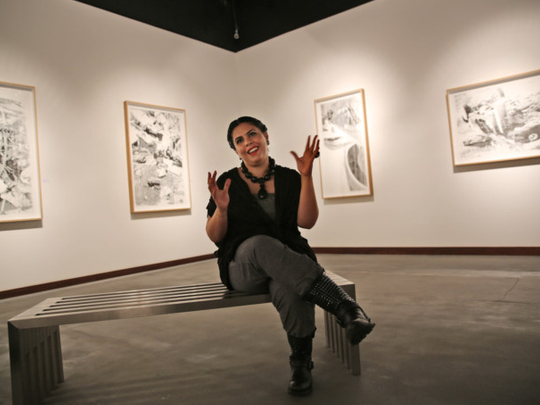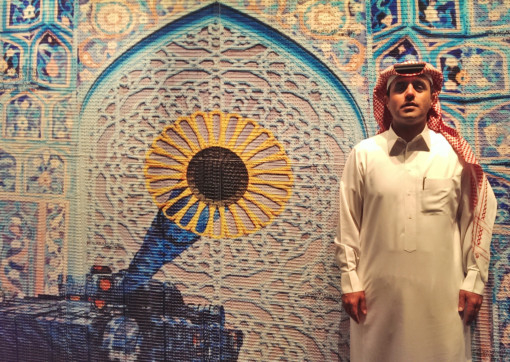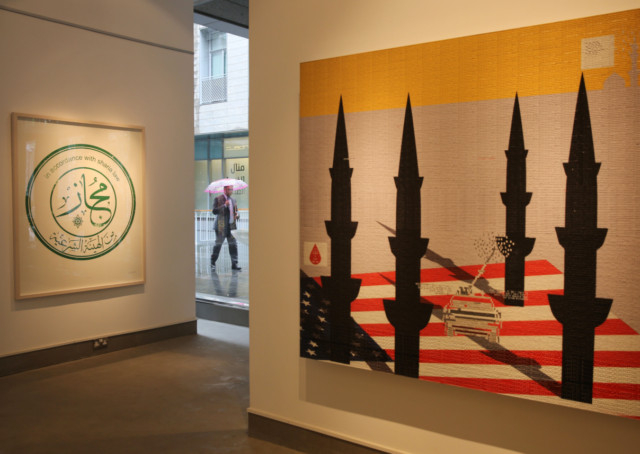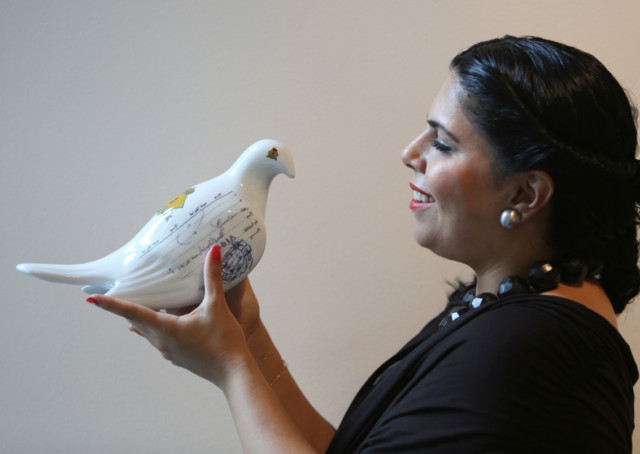
Dubai: When Ahmad Mater visited Makkah in 2010 something felt off. Dozens of cranes were eating away at the mosque to make way for a larger complex surrounding the Kaaba, to which observant Muslims pray toward five times a day that also draws millions of pilgrims annually from around the world.
The changes were irrevocably transforming the city’s landscape. So Mater, a practicing physician and modern artist, took pictures. He titled his project Desert of Pharan in a nod to Makkah’s ancient name.
The kingdom’s modern art scene has become a platform for Saudi artists to voice their frustration about the country’s most sensitive issues without coming into friction with the country’s rulers, reaching the public in new ways and allowing individual points of view in a country where dominant ultraconservative norms have long prevailed.
Saudi modern artists say they are at the frontier of the kingdom’s censorship red lines, muddying its boundaries through art.
“Through my art I am clearly making a critique. I am also acting as a witness to the changes and taking part with an opinion and a voice,” Mater said. “I believe the artist’s role is to expose the truth.”
Manal Al Dowayan’s exhibitions focus on women’s rights in Saudi Arabia. Her current exhibition in Dubai’s Cuadro Art Gallery called Crash is a research-based collection that exposes the ways in which Saudi women are rendered voiceless and nameless in news clippings about their death.
Releasing energy
Al Dowayan says the region’s pressures force people to express themselves.
“Creativity is an amazing place to release energy, to release a thought and to actually have a platform where other people come in and say ‘I agree with you. You’re not alone’,” she said.
In another artwork, she challenged shame attached to mentioning women’s names in front of Saudi men by going around the country collecting signatures from 300 women in a piece resembling prayer beads. Her most famous project involved sculptures of white doves stamped with a required permission notice for women to travel with their male guardians — usually a husband or father — as per Saudi law.
In 2009, the sponsors of an art installation showcasing her work removed the details off the body of the doves in catalogues without explanation, she said.
Two weeks later she was shocked to find Saudi Arabia’s national airline featuring a four-page spread of her doves in the in-flight magazine. “I think these red lines have been engrained in me, and it’s more of a struggle to understand are these red lines? Do they really exist and have I created them or has someone actually placed them for me?” she said.
“And so every project I struggle with how far I can speak about the truth.”
Calls for reform
Open calls for reform in Saudi Arabia are a criminal offence. Women are not allowed to drive and a strict interpretation of Islam is effectively the law of the land. Adnan Manjal, who helped start Saudi Art Guide in 2012, says the modern Saudi art scene challenges traditional notions about the country.
For example, when Saudi Art Guide first started as a website listing art exhibitions in the kingdom and abroad, Manjal said he was surprised to find there were more than 50 art galleries across the kingdom.
Also, few know that the eastern city of Jeddah purchased more than 400 sculptures for display in public squares in the 1980s, including major works from international artists such as Henry Moore, Joan Miro, Jean Arp, Alexander Calder and others.
The modern Saudi art scene was thrust into the spotlight in 2011 when Abdul Nasser Garem’s Message/Messenger replica of a mosque dome partially propped up by a minaret sold in a Christie’s auction for a record-breaking $842,000 (Dh3 million) to an Iranian buyer. It made him the highest-paid living Arab artist in the world.
Manipulating the masses
Garem, who has spent more than half his life in the Saudi Army and is a lieutenant-colonel, said the piece resembles a trap and is a metaphor for how some ultraconservative clerics in his country use religion to manipulate the masses.
“People say that religion affects people. I see people affecting religion,” he said. “The media cannot talk about these issues, but art has a language that needs no translator.”
Because art is not taught in public schools or public universities in Saudi Arabia, the money from the sale was donated to an art programme for young Saudis.
While Garem sometimes works on his art in Saudi Arabia, he sends his works abroad because they are banned in the kingdom.
— AP















